Featured works
DNA nanodevices map intracellular ions Nature, November 27, 2023
Two DNA nanomachines, RatiNa and pHlicKer, are recognized by cell surface receptors. Upon internalization, they localize in early endosomes through scavenger receptor–mediated endocytosis and subsequently traffic to the lumina of lysosomes and the trans-Golgi network (TGN), respectively. While RatiNa reports luminal [Na+] (gray) in early endosomes and lysosomes, pHlicKer reports luminal [K+] (tan) in early endosomes and TGN. In lysosomes with low activity of lysosomal Na+ channels — for example, in Tpcn2 KO cells (marked with a red cross on the TPC2 channel), lysosomal [Na+] can reach as high as 70 ± 30 mM, where the ± sign represents variation among individual lysosomes. In lysosomes with high activity of Na+ channels, lysosomal [Na+] is reduced to 50 ± 30 mM. In TGN with high activity of K+ channels, luminal [K+] levels can be as high as 120 ± 20 mM. Conversely, TGN with low K+ channel activity — for example, in Kcnk6 KO cells (marked with a red cross on the TWIK2 channel) exhibit lower luminal [K+] (100 ± 20 mM). ALBR, anionic ligand-binding receptor.
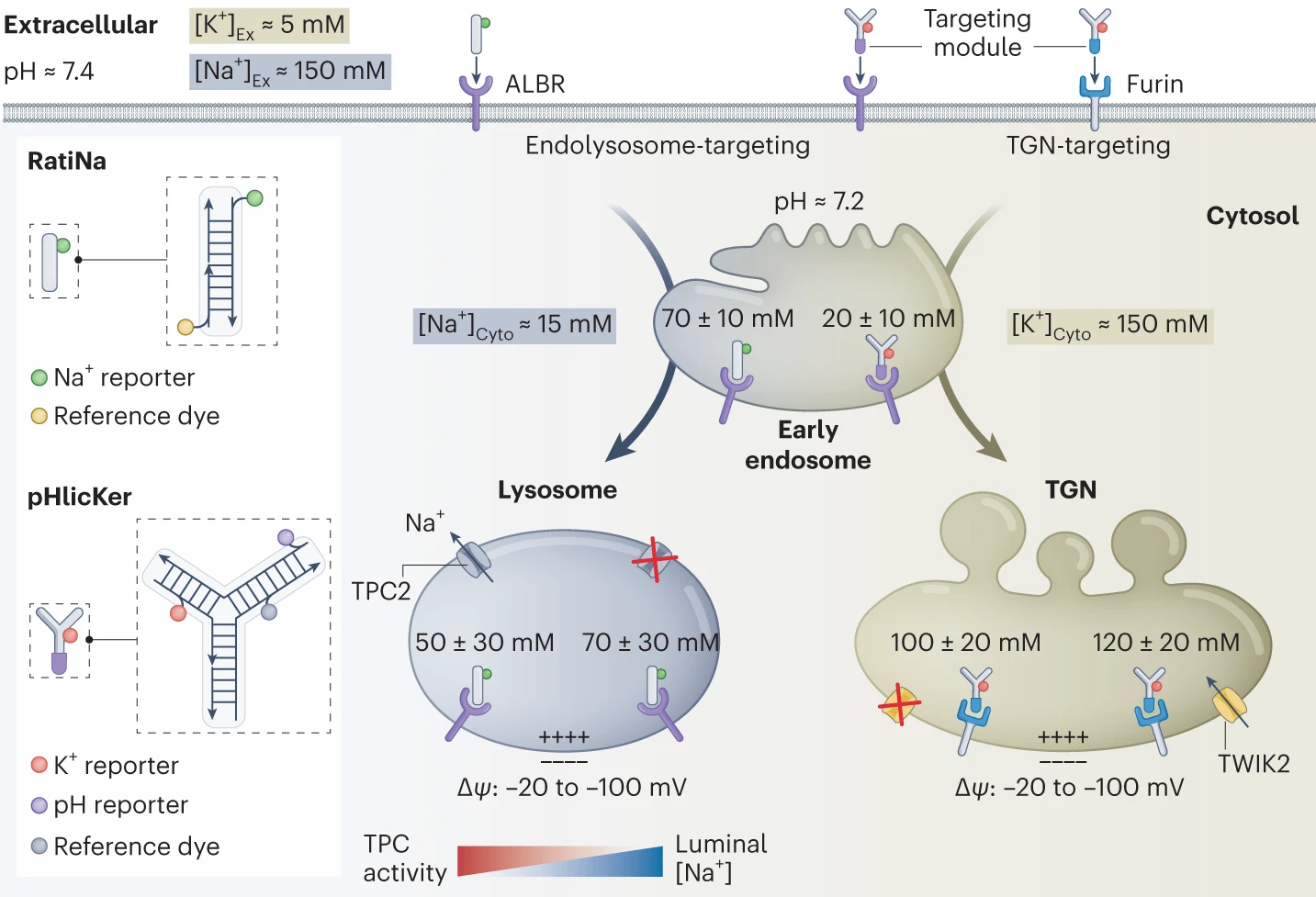 Capturing subcellular metal ion dynamics Nature Methods, November 07, 2023
Capturing subcellular metal ion dynamics Nature Methods, November 07, 2023
An image of C. elegans expressing a lysosomal marker (cyan) and RatiNa (magenta), with a cell outlined in white. Reprinted from Zou, J. et al. Nat. Biotechnol. https://doi.org/10.1038/s41587-023-01950-1 (2023), Springer Nature.
 A DNA nanodevice boosts tumour immunity Nature Nanotechnology, November 19, 2021
A DNA nanodevice boosts tumour immunity Nature Nanotechnology, November 19, 2021
The antigen-presentation ability of M2-TAMs is limited by the high activity of lysosomal protease, which digests tumour-associated antigens (orange spheres). The DNA nanodevice developed by Cui et al.10 selectively targets lysosomes in TAMs, where the released payload E64 (red sphere) inhibits the lysosomal protease activity. The improved antigen preservation and presentation offered by the DNA nanodevice effectively activate T cells. Credit: adapted with permission from ref. 10, Springer Nature Limited.
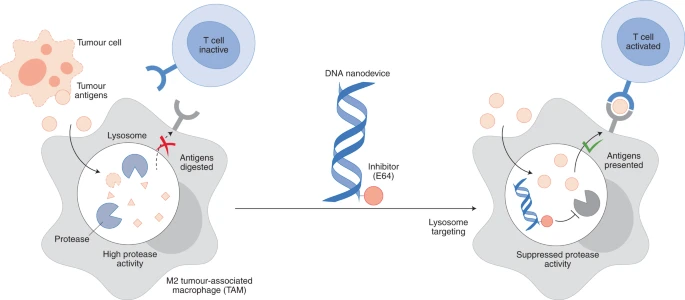 A Nanoscale Voltmeter Reveals Biology Hidden in Plain Sight Scientific American, April 26, 2021
A Nanoscale Voltmeter Reveals Biology Hidden in Plain Sight Scientific American, April 26, 2021
Voltmeters aren’t typically associated with life sciences labs, but a new nanodevice that measures voltages across cell structures could open new frontiers for biologists. The cell is packed with smaller structures, called organelles, which perform various functions. Each organelle is contained by a plasma membrane. Credit: Verenice S. Noyola
 A DNA voltmeter exposes a cell’s electric inner life Nature, November 02, 2020
A DNA voltmeter exposes a cell’s electric inner life Nature, November 02, 2020
A cellular lysosome (green; artificially coloured). A miniature device can measure the voltage difference across the outer membranes of lysosomes and other components of cells. Credit: SCIENCE SOURCE/SPL
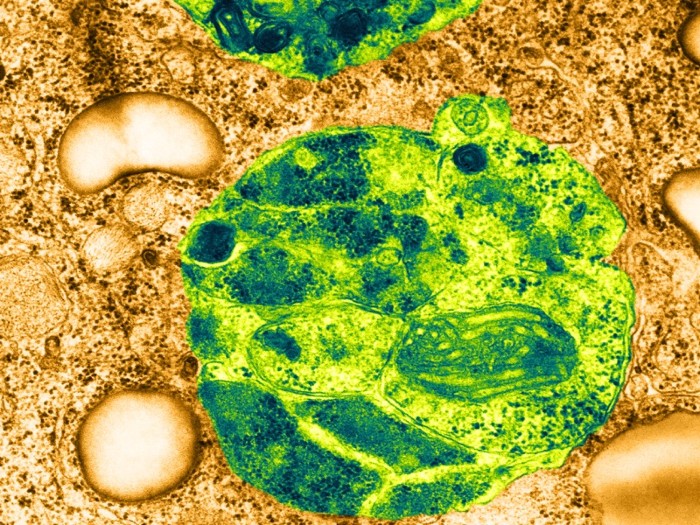 Nano-device maps a cell’s enzymes at work Nature, February 11, 2019
Nano-device maps a cell’s enzymes at work Nature, February 11, 2019
Diphtheria bacteria infecting Caernohabditis elegans worms (pictured) co-opt one of the worms’ enzymes to make a toxin, according to a technology that can pick out even low levels of enzymes in cells. Credit: Sinclair Stammers/SPL
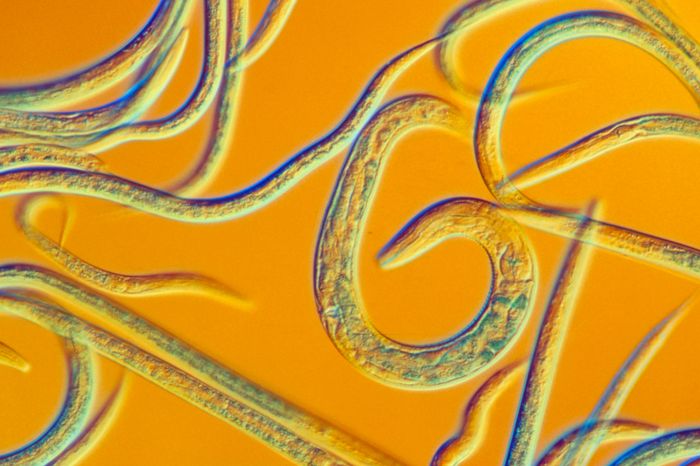 DNA nanostructures fingerprint cellular organelles Nature Nanotechnology, February 05, 2019
DNA nanostructures fingerprint cellular organelles Nature Nanotechnology, February 05, 2019
DNA nanodevices that can enter cells and quantitatively image the level of chemicals in organelles might find applications in medical diagnostics.
The author file - Yamuna Krishnan Nature Methods, December 10, 2018
A probe for a journey into bubbles and why it’s good to be both inventor and discoverer.
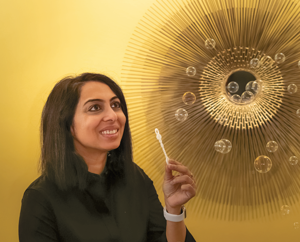 DNA nanotechnology: Lysosomes uncovered Nature Reviews Materials, December 12, 2018
DNA nanotechnology: Lysosomes uncovered Nature Reviews Materials, December 12, 2018
Yamuna Krishnan and colleagues demonstrate how a DNA-based reporter can be used to simultaneously measure lysosomal pH and chloride concentration in live cells, revealing chemically distinct sub-populations that play a role in lysosomal diseases.
Researchers use DNA nanomachines to discover subgroups of lysosomes Phys.org, December 20, 2018
Clockwise from top left: UChicago scientists Anand Saminathan, Kasturi Chakraborty, Yamuna Krishnan and KaHo Leung examine results from a new DNA nano-machine to track lysosome activity in cells. Credit: Irene Hsiao










